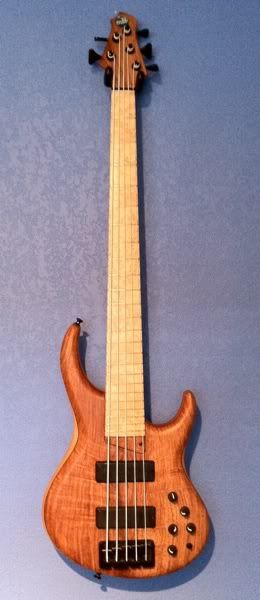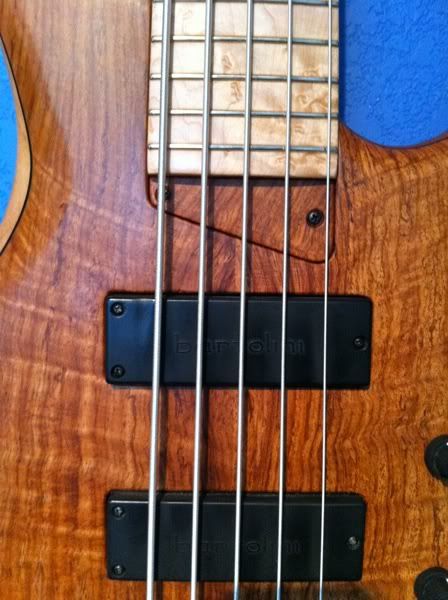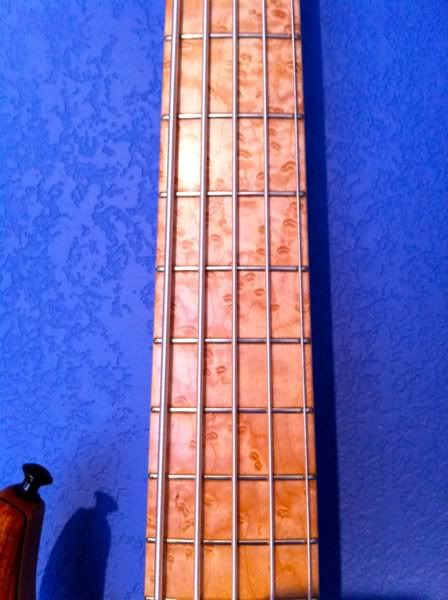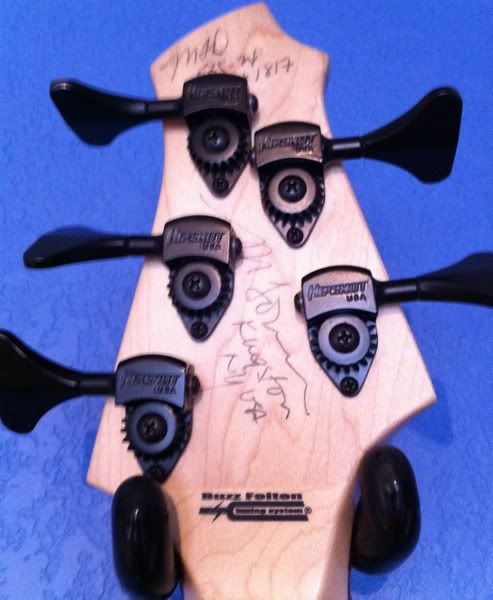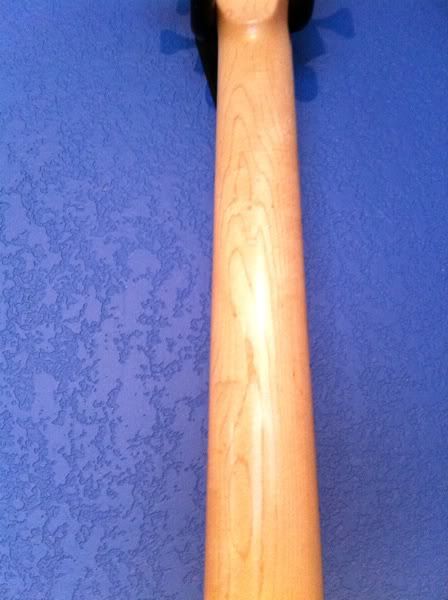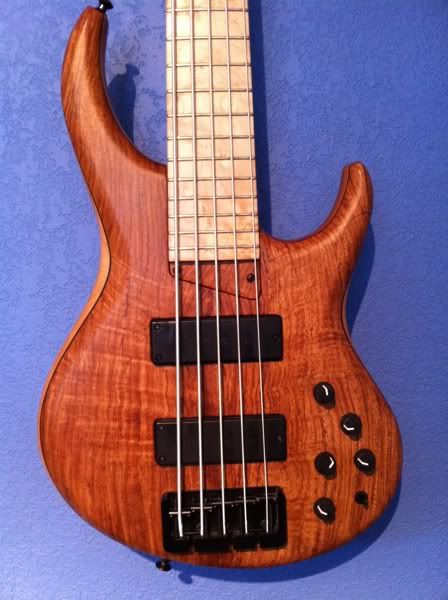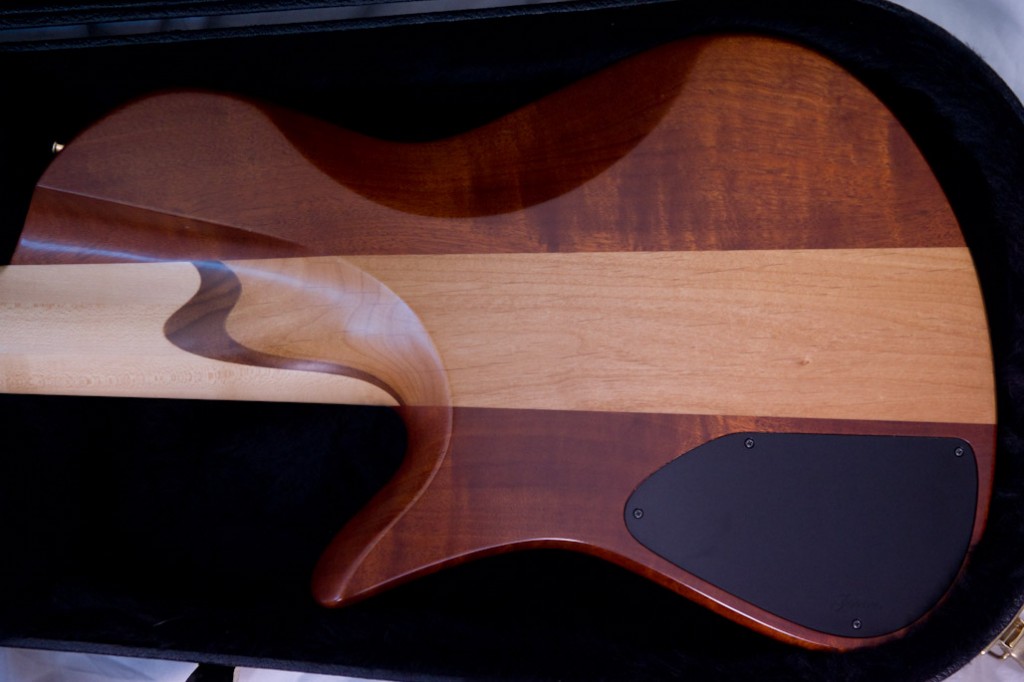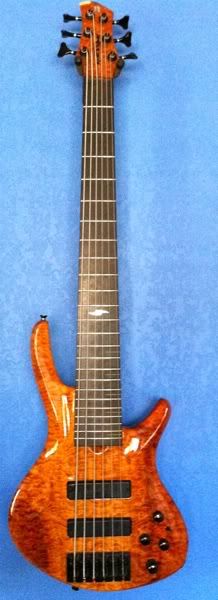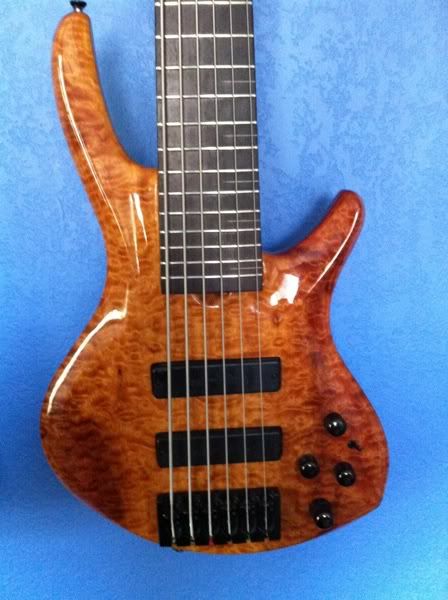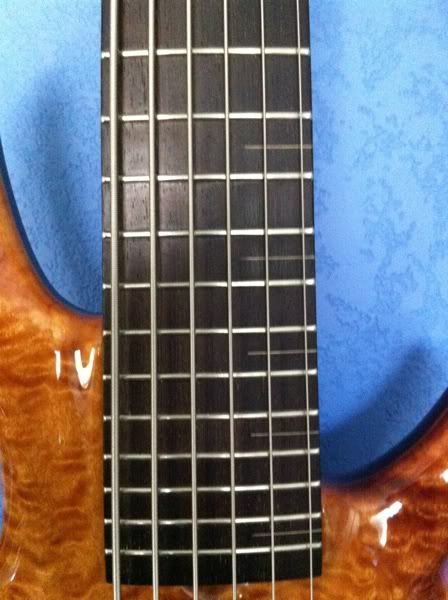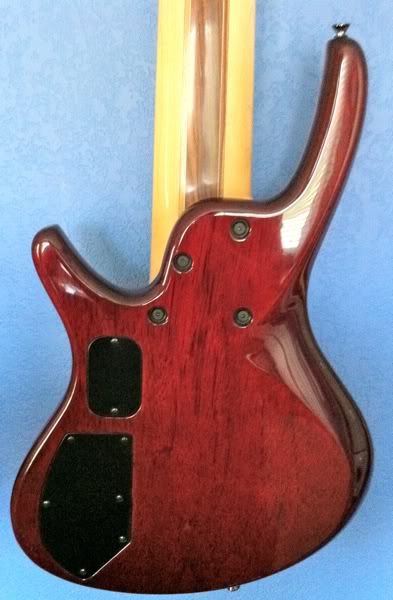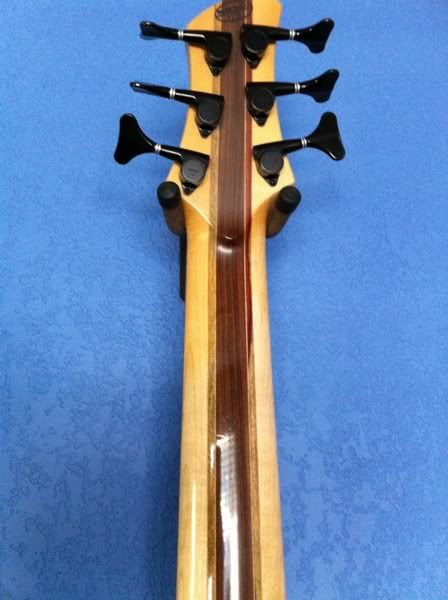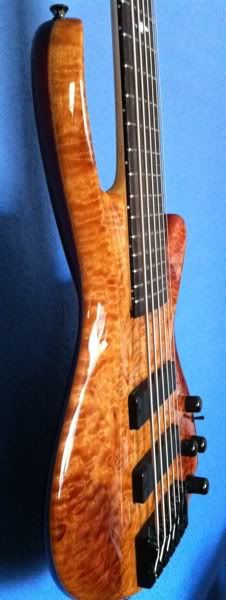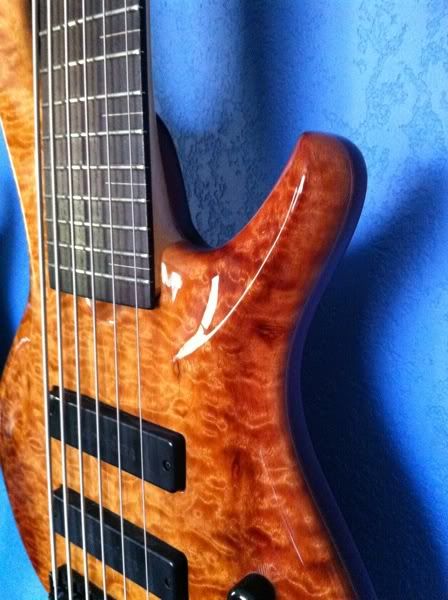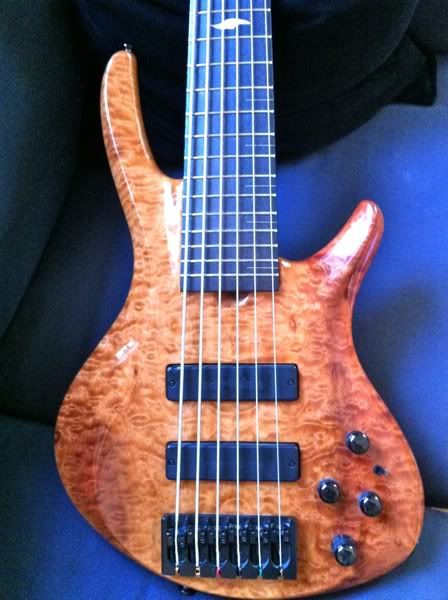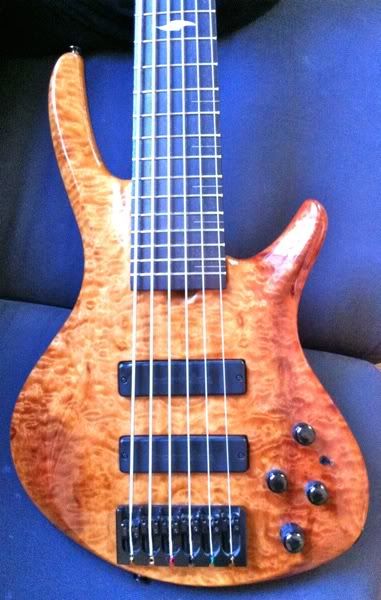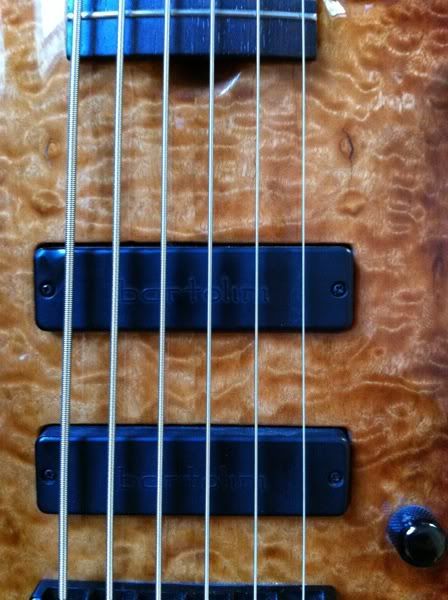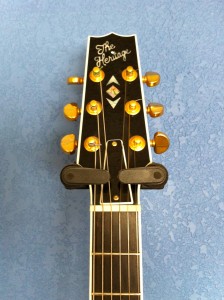|
Interesting read:http://www.nytimes.com/2012/01/03/sc…s-lags.html?hp
I’m with the violinist naysayers on this study, which is interesting but misses some things. You can’t judge an instrument until you’ve played in an actual musical situation, and often times the true character does not come out and become apparent until you’ve spent some time with it. It’s taken me weeks if not months to understand any instrument I’ve ever owned, which is why I’ve flipped so many. I played one of the world’s best basses this year in my living room and used the Ferrari in a parking lot analogy myself. That being said, I have no problem with playing a well made new string instrument, which is why my 100 year old bass is about to be replaced by one that is going to be made starting the end of this month! |
Blog
Study On Strad Violins in NY times
Joining The 6 Million Dollar Band- The Ultimate 80’s Experience!
I’ll be joining the The 6 Million Dollar Band for many of their shows next year.
The Six Million Dollar Band (6MDB to their fans) delivers high-energy 80s New Wave music using a combination of new and old technology. Five keyboards complement the guitar, drum and bass rhythm section, producing the classic sounds 80s fans love to hear. Vintage 80s synths deliver album-perfect sound. Tears for Fears, Duran Duran, Simple Minds, Depeche Mode and more are recreated faithfully and performed with the same energy as the original acts.

We have been rehearsing and I am really enjoying getting to revisit a lot of fantastic new wave and other 80’s dance tunes. (I haven’t had this much time with a pick in years!)
Come by and see one of the many gigs I’ll be playing with them this year:
free video bass lesson 1
Here’s my first free video bass lesson for electric bass guitar. It’s good for beginners or intermediate players looking to improve their basic technical approach to the left hand. I explain my rationale for using three finger double bass technique as well four finger guitar technique depending on the part and area of the neck.
Look for more videos on all kinds of bass related subjects soon!
Why I’m Giving Up Six-String Bass
Some of you may have noticed that I recently sold my only six string bass. It was a decision that has been creeping up on me for the last few years and suddenly seemed like an excellent idea.
I got the itch to start playing six just after finishing my music degree ten years ago. I switched to five at the end of high school, originally stringing my Warwick Corvette Proline with a high C string and a hipshot drop D tuner. I thought extending the range in both directions would be helpful. Shortly after getting the bass, I had a gig with a cover band that had a prominent low B part and opted to restring the bass in a more traditional manner, which immediately realized the utility of and never looked back. The low B has been indispensable, and though I’ve owned several four’s since then, I switched full time to five’s well over seven years ago, outside of my new Warwick Alien acoustic bass guitar which I doubt would produce enough low end to make a B string worth having. (It doesn’t leave the house much anyways.) It is worth noting that many gigs require a five string bass these days, such as work in theater orchestras at the Buell.
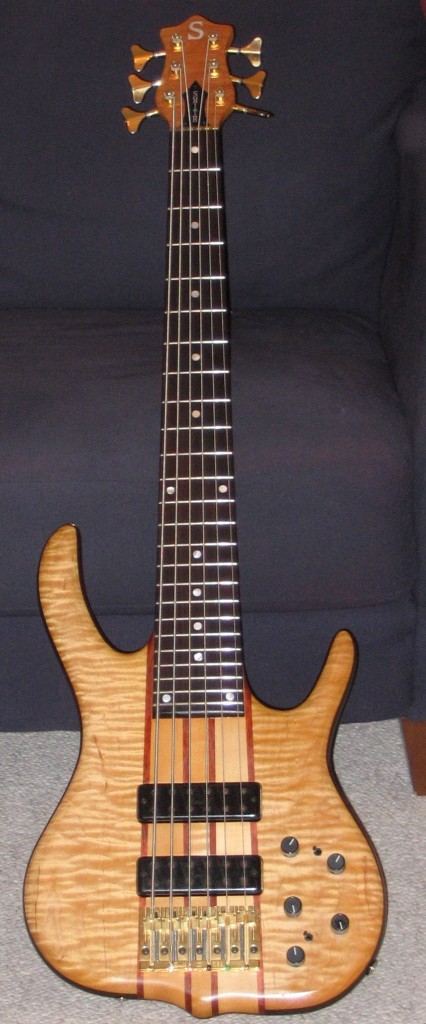
The six became of some interest to me after I had a resurgence in my interest in electric playing after spending most of music school consumed with upright bass, since it’s traditional focus on classical jazz music necessitated it. I was primarily interested in the six because of two players- Oteil Burbridge, and John Patitituci, whose stunning lyrical solos and chordal work was really making me reconsider what was possible with the electric bass. I took the plunge into a Ken Smith six by selling all of my other basses, and enjoyed the ability to solo in higher registers with some ease. It made the issues of string muting a more prominent issue, though, and the weight and size of the bass made me realize I needed to have something a little more playable for your average gig, and I quickly picked up another four.
It also garnered some dirty looks from a few of the blues and RnB musicians I was playing with, who wondered what I was going to be doing on some of the groove gigs. The reality was that while a low B can be helpful in almost any situation, high melodic solos on the C were not necessary for much of anything. Coming from a jazz background, I do solo a great deal for a bassist, but even then there were often many gigs that went by that I never found myself using that high C string on.
I picked up another modern five- an MTD 535- about three years ago, with the idea that it would take the place of my six on gigs where I wanted a contemporary sounding bass but wouldn’t be soloing much. It turns out that the six started spending much more time at home. I also started to become aware that when I wasn’t playing it regularly, my fingerboard knowledge of where the notes in high positions quickly diminished, and I often regretted not sticking with a five that I always knew so well. The crossover from URB was also diminished on the six, since there was less similarity between the two.
The other factor was that I have become increasingly picky about my sound the longer I play, and there was some part of me that was always disappointed with the tone of the high C string. It was very thin and had a much different character that the other strings, and as a player who often is going for a full bodied tone, I found I preferred the sound of the G string in very high positions to the C string in middle ones. I never used the C for bass lines, and rarely played it below the 10th fret, preferring to treat the bass like I would a four with an option to cross to the high string only when I wanted a different sound for soloing. I also realized I rarely used those last five frets on the C that actually extend the range of the bass.
Another issue that I wish more of my students would also consider is the challenge of playing multiple basses and styles of music. Between playing jazz and classical music on the URB, fretless, and regular five, the six was an auxiliary skill that often got pushed aside in favor of more essential skills. I enjoy playing in many genres and using different instruments, but there is always the opportunity cost that one’s respective skill on each is more slowly developed. I realized that while playing arco and fretless were skills that often got me working gigs and were commented on by audiences and my fellow musicians, no one was requesting the six or telling how much the enjoyed it. I decided that it was time to let that less essential skill go in order to focus on doing the things that I knew I really wanted to do well at the highest level possible.
So for the time being, I’m retiring the six. It is entirely possible that I will hear a six player and want to take it up again in the future, but for now I’m going back to the more manageable five with the hope that my skills there will be more than enough while soloing that no one will remember I played six for a decade of my career. We shall see . . .
For Sale: MTD 535-24 Bass
SOLD

|
For Sale: MTD 535-24 Bass
Handmade in March 2009 by Michael Tobias in USA; FS by original owner5 string, 24 frets ($4800 for bass, $200 extra for 24 frets)Figured birdseye maple fingerboard, maple Neck (a $500 upgrade)Alder body, figured rosewood top.Matching rosewood truss rod cover and headstock ($200 upgrade) Buzz Feiten tuning system Asymmetrical neck, zero fret, 19mm spacing at bridge Standard finish- catalyzed acrylic urethane satin Black Hardware Bartolini pickups- proprietary design for MTD The controls are: master volume and a pan pot, treble, mid, bass cut and boost, with center click (from neck to bridge). The three position switch selects the mid range cut and boost point. Down is lower mids, center is middle and up is upper mids. When the mid pot is at center click, the switch has minimal effect. This EQ has 2 batteries and is a +/- 9 volt system. This bass is in incredible condition- 9.5/10. It has no major dings or scratches- in fact almost nothing at all! The frets have been played on with Nickel strings only and still have lots of life in them. The bass has been stored in a humidity controlled, smoke free environment. Incredibly lightweight bass at approximately 8.4 lbs (according to my mediocre scale- I actually thought it weighed less!) This is the lightest combination MTD makes, and was recommended to me my Michael himself in request for a lightweight bass with an excellent traditional fingerstyle sound while maintaining the characteristic MTD tone. Of course, it also has a fantastic slap tone and can get very P-bass like with the front pickup or Jaco J tones with bridge pickup. Very versatile and shoulder friendly bass!
Retails new for $6,470 Get it near mint for $SOLD . NO TRADES. I will not reply to trade requests, thanks! I may be able to provide some audio and video samples- serious buyers only please. |
The New Fodera Emperor II Elite
I just picked up this 2008 Fodera Emperor II Elite and wanted to offer a quick review. It’s a 25th anniversary model, and features a very rare private reserve figured swamp ash top, which is practically unheard of. It’s also got a Brazilian rosewood fingerboard (hard to come by these days, since it hasn’t been exported from Brazil in 40 years), a mahoganybody, and an alder tone block, as well as Duncan dual coils and the Mike Pope Preamp.
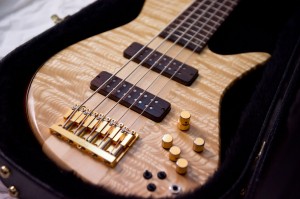
Most of this wood has been on hand at Fodera since theshop started, and In fact the story is that the Mahogany was from the same block used on Victor Wooten’s Monarch Classic, arguably the bass that made the company! I bought this bass after only hearing a few clips, but based on what I knew about the wood combination suspected it would suit me perfectly.
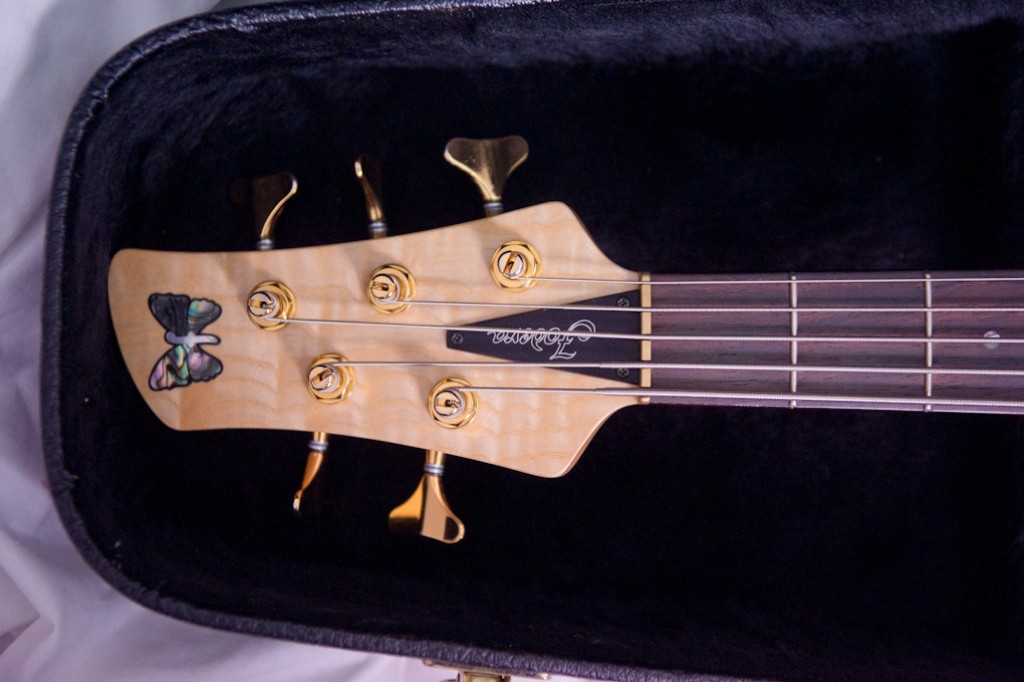
I am pleased to report it’s exceeded my expectations in all areas; tone, versatility, aesthetics, and ergonomics. I am floored by the quality and have to say that I have found that Fodera’s reputation as the world’s top bass maker is deserved given this particular bass. I think this marks the beginning of finally having an electric tone that feels like it’s really my voice and I’m looking forward to putting it to use.
having an electric tone that feels like it’s really my voice and I’m looking forward to putting it to use.
Here’s some quick samples of some classic tunes. I’m still getting used to the string spacing etc but I think this is promising to say the least.
Rock With You 2
The Chicken Fodera demo 4
Beautiful Love- Fodera test
Fodera slap demo
THIS BASS IS FOR SALE CURRENTLY AT AUSTIN BASS TRADERS IF YOU’RE INTERESTED IN IT!
For Sale: Roscoe Century Signature 6 string Bass
|
$SOLD
For sale:
Roscoe Century Signature 6- their top of the line bass, with “3D” carved top with belly carveRare Madrone Burl top Spanish Cedar back Wenge fingerboard with 12th fret Wave inlay, and custom maple inlays on treble side of upper fingerboard (Aid in visibility up high; done by Mark Tenorio of Tenoriowerx guitars) Bartolini pickups and pre with mid range switch 5-piece all quartersawn maple/purpleheart/purpleheart/maple “Wedge” neck (the heel of the center lamination is wider than the headstock) Bolt-on neck with single-action trussrod and dual graphite rod reinforcement Matching headstock Hipshot A-style bridge and ultralight tuners, black finish Hardshell SKB case- never used Weight- 10lbs, 3oz Made in 2006
This bass is versatile and can range from deep and throaty like a “P” to singing and contemporary. The Spanish Cedar and madrone give it a natural, acoustic sound. I have used it in the pit of the Broadway musical “Wicked”, at Red Rocks Ampitheatre, church, and a ton of jazz gigs, all to great success. I’m only selling because I’m not playing much 6 string these days. I have home and studio audio clips if you’re interested. The bass is in excellent condition – 9/10. Frets have a little wear but have some life left in them. A bit of wear from my thumb resting on the neck pickup. There are no flaws on the body, one dent on the underside of the neck I didn’t notice until now, and a few scratches on the top of the neck that you can’t feel unless you play with your thumb over the neck, which you shouldn’t be doing on a big 6! Just giving you full disclosure- it really looks like it did the day I got it. Stored in a smoke free, humidity controlled environment. Fresh set of Da’addario XL 165’s with tapered B and low action and great intonation. This neck is very stable and I have only had to adjust a few times since I bought it new. If you add all these options up today, this bass would $5,580 list. |
For sale: Heritage H-555
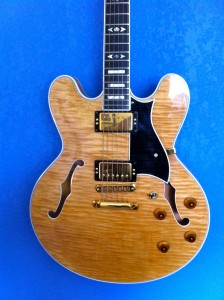 This is a 2003 Heritage H-555. This particular guitar features a lovely antique natural finish that has an amber tint to the natural color with black flamed pickguard, gold hardware, ebony fingerboard with inlays, upgraded HRW pickups, and a 3 piece flamed maple neck with a stringer. (I believe the stringer is bubinga). This the upgraded version of the 535 and much prettier than the 535 or Gibson es-335 if you’re unfamiliar with this rarer model.
This is a 2003 Heritage H-555. This particular guitar features a lovely antique natural finish that has an amber tint to the natural color with black flamed pickguard, gold hardware, ebony fingerboard with inlays, upgraded HRW pickups, and a 3 piece flamed maple neck with a stringer. (I believe the stringer is bubinga). This the upgraded version of the 535 and much prettier than the 535 or Gibson es-335 if you’re unfamiliar with this rarer model.
Info from Heritage:
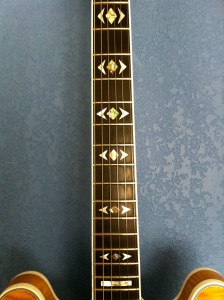 Neck : 17 degree peghead pitch; one-piece curly maple neck; single white bound mother of pearl and abalone inlaid head veneer.
Neck : 17 degree peghead pitch; one-piece curly maple neck; single white bound mother of pearl and abalone inlaid head veneer.
Fingerboard : 24 3/4” scale ebony single white bound fingerboard with 22 frets; mother of pearl and abalone inlays.
Body : Double cutaway semi-hollow body with laminated arch curly maple top and back; multiple white bound top and white bound back; solid curly maple rim; single white bound pickguard; with f-holes.
Body Size :
Rim Thickness – 1 1/2”
Body Width – 16”
Body Length – 17 7/8”
Electronics : Two gold humbucking pickups; with two volume and two tone controls; selector switch.
Hardware : Individual gold plated machine heads; gold plated stop bar tailpiece and adjustable bridge.
This stunning guitar has been not been used for gigs; I am a pro bassist and it has lived in my humidity controlled (40-55%) home studio, where it gets played maybe an hour a week. The frets have some life in them.
The guitar is very good overall shape, however, there are some chunks taken out of the finish over the binding from the 2nd to 12th fret where some tape from a fret polish pulled the finish up (price adjusted accordingly!). See photos. There are few scratches from string changes on the headstock, and some patina on the tuners. It sounds great!
Includes Heritage Hard shell case, not used since it rarely left the house!
Priced at $SOLD including shipping in CONUS. Contact me through email if interested.
Four Ways to Grow Musically- Without Practicing!
We all strive to improve ourselves on our instruments, but we are often unaware that much of our growth occurs in situations outside of the practice room. Here’s some of the thing you can do without even needing to play a scale.
1. Listen
Every time you listen, you are growing. The more active and engaged you are while listening (i.e. dedicating time to listen to music rather then simply using it as background sound while doing something else), the more you will gain from it. And while listening with depth to a single recording is important, it is equally important to listen with span as well, so be sure you are constantly making an effort to expose yourself to new recordings, artists, and genres regularly.
2. Watch
When I was in music school, we were actually required to attend a certain number of concerts per semester because it was understood that seeing live performances is crucial to your development. I’m still amazed at how simply seeing a great artist (especially on the bass) can sometimes magically change my approach and break up routines the next time I play. If you can’t make it out much, rent some concert DVD’s or spend a little of that web surfing time on youtube.
3. Play
I would say it’s impossible to really become a great musician without playing with others on a regular basis, or more precisely, it’s impossible to become a great player without playing with other great musicians. As bassists, we are often in demand enough that we can get ourselves into groups that have much better players then we are, and I assure you that if you keep showing up, you will get “pulled up” to the level around you. Play in as many school ensembles, community groups, garage bands, church groups, and jam sessions as you can.
4. Study
Build a library of music related books. Everything from theory texts to biographies to music related fiction will sink back into your playing. A simple place to start that I have used since day one is to subscribe to Bass Player magazine. If you simply read an issue a month, I assure you that you will be developing a treasure trove of great information on all aspects of playing, and at not much more then a set of strings, it’s a great bargain!
Of course, the trick is to take these experiences and integrate the insights gained from them into your practice time. Hopefully, you’ll return to the “shed” with renewed sense of purpose, direction, and last, but not least, inspiration!
Commissioned a new double bass from Nick Lloyd
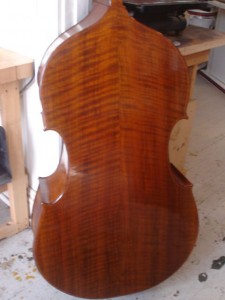 After searching online for 6 months for a new bass and then traveling to the ISB to try candidates this June, I found the maker of my next instrument, Nick Lloyd. Nick’s basses had all the qualities I was looking for- clarity, a tight but substantial bottom, playability, great aesthetics, and the price was just right as well. Since then, I have been trying to figure out how to get into one of his 3/4’s and finally lined it all up after much planning, hand wringing, long chats with my wife, and thinking for months. (Still need to sell my Hawkes FS here!)
After searching online for 6 months for a new bass and then traveling to the ISB to try candidates this June, I found the maker of my next instrument, Nick Lloyd. Nick’s basses had all the qualities I was looking for- clarity, a tight but substantial bottom, playability, great aesthetics, and the price was just right as well. Since then, I have been trying to figure out how to get into one of his 3/4’s and finally lined it all up after much planning, hand wringing, long chats with my wife, and thinking for months. (Still need to sell my Hawkes FS here!)
Anyway, I’m thrilled. Nick and I have been talking for months, and one of my students just purchased the 7/8s he had at the ISB, which was few points shy of a gold medal but had a solid silver for tone and certificate for workmanship.
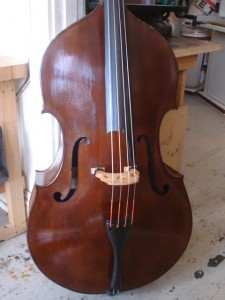
We went over some details today. I’m getting the 3/4 walnut with standard F holes, violin corners, 41″ scale length, and chromatic extension. This will be a jazz bass, so Nick’s going to put high arching on the top and give it some real punch and clarity, maybe slightly brighter than the one 3/4 he had at the convention. And he’s just updated his top varnishing. The new results will be on his website in the next week, and I could tell he’s excited about the outcome. It should be a good match for his walnut back and sides.
The bass should be done in January. I’ll fly out to pick it up in person and do small setup adjustments, and perhaps a few beers with the luthier himself. I’ll post some pics and vids here when it arrives. Hopefully this will be the bass I play for the rest of my days, or at least the next 20 years!

